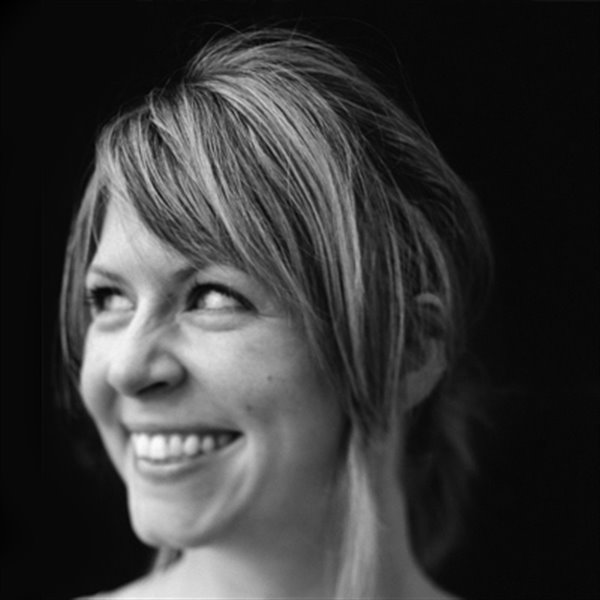Neshan is a professional and educational magazine with the Aim of promoting the design & visual culture intention of ameliorating ties between the graphic designers of Iran, Asia and all parts of the world. Neshan is a member of International Design Media Network (IDMN), of the International Council of Design (ico-D).
Neshan
Neshan is an independent magazine based in Tehran designed to provide a source of information, insight and inspiration in the field of graphic design for domestic and international audience. Iran’s first and only graphic design magazine not only presents the diversity of contemporary visual design in the country but also traces the overlooked lines of Iranian iconic legacy that connect the work of different periods. The magazine reflects both international trends and local concerns through enlightening articles by prominent experts with the intention of ameliorating ties between the graphic designers of Iran, Asia and all parts of the world. Neshan is published quarterly for professional designers, advanced degree students and anyone interested in critical, informed perspective about design and visual culture.
History
Modern graphic design in Iran was born about 90 years ago and during the past 60 years illustrations has become more simplified and stylized in a contemporary manner. Since Iran’s contemporary graphic design was virtually unknown to public inside and outside of the country, a group of like-minded practitioners in 2003 decided that Iran needed a design magazine aimed at both domestic and international audience. Neshan founding members are the leading players on Iran’s design scene. However, the prominent role was that of The renowned pioneer of graphic design in Iran, Morteza Momayez (1936-2005). As editor in chief, he formatted Neshan to be at once distinctly Iranian in nuanced ways and decidedly modern in its simplicity. After his death the editorial board took responsibility of editor-in-chief and the role was rotating among the board for 6 years.
Content
Primarily visual, Neshan strives to offer comprehensive picture of the unique aspects of visual creation in Iran. It provides a collection of well researched articles on the latest projects by both upcoming and established design talents in Iran and around the globe. While Neshan is a contemporary journal it looks back at Iran’s visual-scriptural heritage too. One of the major accomplishments has been the documentation of Iranian graphic design history through publishing images and motifs of Iranian graphic art. The modern look of the magazine itself is influenced by miniatures, page ornaments and layout of manuscripts including books of poetry, pieces of calligraphy and illustrated books. Neshan is truly international without sacrificing the beauty of the Iranian design aesthetic. It offers English translations and the website features them too. Neshan has been featured as one of the most influential magazines devoted to graphic design in 100 Classic Graphic Design Journals authored by Steven Heller and Jason Godfrey.
Mission
Neshan is published amid social, religious and cultural limitations. But these limitations have triggered creative solutions. One of the limitation Neshan has been faced from the beginning was overcoming the lack of established technical design vocabulary to convey the ideas to scholars and public audience. Unlike Persian literature that has been developed a rich vocabulary and symbolism in the span of two and a half millennia, Persian design terminology is quite young and requires a great deal of attention. Despite not having the journalism expertise, the editorial board was self-aware of the drawback and recognized it as an opportunity for Neshan to generate its unique design voice and vocabulary and familiarize the audience with the new words and terminologies. For Neshan family the objective is never to give up and always to find ways to pronounce to the world the fascination and significance behind Iranian visual design. “Life is a trial not a leisure.”, quoted in Neshan Manifesto written by the late Morteza Momayez, is not just a slogan but the way Neshan was born and prospered.
License holder:
Saed Meshki
was born in 1964 in Iran. He studied Graphic Design in the Faculty of Fine Arts at Tehran University. He is a member of the Alliance Graphique Internationale (AGI), Member of the Board of Iranian Graphic Designers Society (IGDS), Manager of Neshan magazine and Member of the 5th color group and Manager of Meshki publication. Saed has won numerous awards and prizes both at home and abroad. He has been the winner of the Second Prize for cover design and the Special Prize of Creativity of the 6th Biennial of Iranian Graphic Design (1999), First Prize for Cover Design of the 7th Biennial of Iranian Graphic Design (2001), Pearl of Czech Republic Design(2002), First Prize of the First Biennial of Cover Design of Tehran (2003), Icograda Excellent Award in the 19th international poster Biennial Warsaw (2004). saed@saedmeshki.com
Editor-in-chief:
Majid Abbasi
is design director of Studio Abbasi active in the international community, based in Tehran and Toronto. He leads a variety of design projects for start-ups, non-profits and educational organizations worldwide. Majid actively contributes to the international design scene as an instructor, jury member, curator and writer. He has been editor-in-chief of Neshan, the leading Iranian graphic design magazine since 2010. Majid has been members of Iranian Graphic Designers Society (IGDS) since 1998 and Alliance Graphique Internationale (AGI) since 2009. majidabbasi1@gmail.com
Editorial Consultant:
Ali Rashidi
Ali Rashidi After graduating from California College of Arts in San Francisco (now CCA), Ali started his early career working as a designer and art director at University of California Publications. He established his own design office DesignZone in 1986 in Oakland, California. He moved to Iran in 1990 and co-founded Daarvag International, a distinguished branding and advertising company. His teaching career includes over two decades at graduate school of Art University and University of Tehran. He is one of the co-founders of Neshan magazine, a member of AIGA and ADC Global, and former chairman of the Iranian Graphic Designers Society (2012 to 2015). ali.rashidi@daarvag.com
Pouya Ahmadi
Pouya Ahmadi is a Chicago-based typographer and art director. He is an Assistant Professor of Graphic Design at the University of Illinois at Chicago—School of Design—and an editorial board member of Neshan magazine focusing on contemporary graphic design and the visual arts. Pouya's work has been showcased by It'sNiceThat, AIGA Eye on Design, People of Print, Grafik, Etapes, Type Directors Club, Print Magazine, and many others. Pouya holds a MA/MAS degree in Visual Communication from the Basel School of Design in Switzerland and an MFA in Graphic Design from the University of Illinois at Chicago. pouyahmadi@gmail.com
Steven Heller
Steven Heller is the co-chair of SVA NYC's MFA Design / Designer as Author + Entrepreneur program. He is the author of over 170 books on design and popular culture and a columnist for the New York Times Book Review and Atlantic magazine online. He is the author of The Daily Heller and the recipient of the 2011 Smithsonian Institution National Design Awards. sheller@sva.edu
Jens Mueller
Born in Koblenz/Germany, 1982. Apprenticeship in advertising agency and printery. Diploma and Master-Degree in graphic design from University of Applied Sciences Dusseldorf. Since 2007 Designer of stamps for German Ministry of Finance. 2009-2012 partner of „müller,weiland“ design studio. 2013 Winner of international design w „Kieler Woche“, with Karen Weiland. Since 2009 editor of „A5“ book series about graphic design history. Since 2012 Creative Director of "optik" design studio in Düsseldorf. Winner of national and international design awards. Author of several articles and books on graphic design history. jens@optik-studios.de
Olga Severina
A Ukrainian graphic designer, Olga Severina obtained her Ph.D. in Visual Arts in 2010. Olga is an author, whose articles on the history and contemporary trends in graphic design are published in magazines around the world. Over the years her works were featured in a variety of design competitions and campaigns: Biennale Golden Bee (Russia), Warsaw Poster Biennale (Poland), International Poster Biennale (Mexico) and Mayakovsky 120 poster campaign are to name a few. Olga Severina was always an active participant in the design community. In 2006 she became involved with an International Eco-Poster Exhibition The 4th Block (Ukraine), where she currently serves as the exhibition curator. In her more recent ventures Olga focuses on art shows that celebrate design and promote balance between nature and men in the United States. severinchik@gmail.com

Vanina Pinter
teaches history and critical studies of graphic design at Le Havre School of Art and Design (ESADHaR). She takes part in Une Saison Graphique — annual festival of graphic design— as co-organizator and co-curator of the event. Vanina has co-signed various contemporary exhibitions of graphic design for Une Saison Graphique such as Lieux Commun/Jocelyn Cottencin (2010), Julian House (with Jean-Michel Géridan, 2013), Pangramme/Fanette Mellier (with Yann Owens, 2014), Occur Books/Frédéric Tacer (2015). And Impressions Françaises (Chaumont, 2007) and Graphisme et architecture (Lille, 2010) along with Etienne Hervy. Former co-editor in chief of Étapes : magazine, Vanina currently writes about contemporary graphic design, with texts such as Architecture en noir et blanc, Ludovic Balland and Double Face/Laurent Fétis for étapes :, Barnbrook for Galerie Anatome, Across the grid, Frédéric Teschner for Fransciscopolis Editions, Signalétiques for Graphisme en France,… and more recently, various texts for the french online review www.t-o-m-b-o-l-o.eu vanina.pinter@free.fr

Emily Verba Fischer
(b. 1982) is an Ohio native who returned to the Midwest after receiving her master's degree from the Basel School of Design. Prior to her studies in Switzerland, she lived and practiced design for a variety of corporate and cultural clients in New York City, San Francisco, Seattle, and the French Alps. Through these international experiences, she developed a teaching approach that emphasizes the concept of global citizenry in addition to design acuity. She believes that maximizing understanding of other cultures through interpersonal connection and the shared language of design can create a more empathic world for all. Emily is currently an Assistant Professor at the Myron E. Ullman, Jr. School of Design in the University of Cincinnati's College of Design, Architecture, Art, and Planning (DAAP). She frequently travels abroad to share her research and pedagogical activities. Her work has been featured in exhibitions and publications nationally and internationally. emily.verba@uc.edu